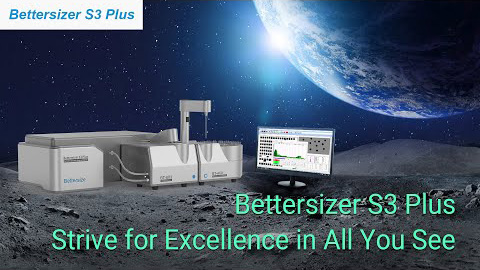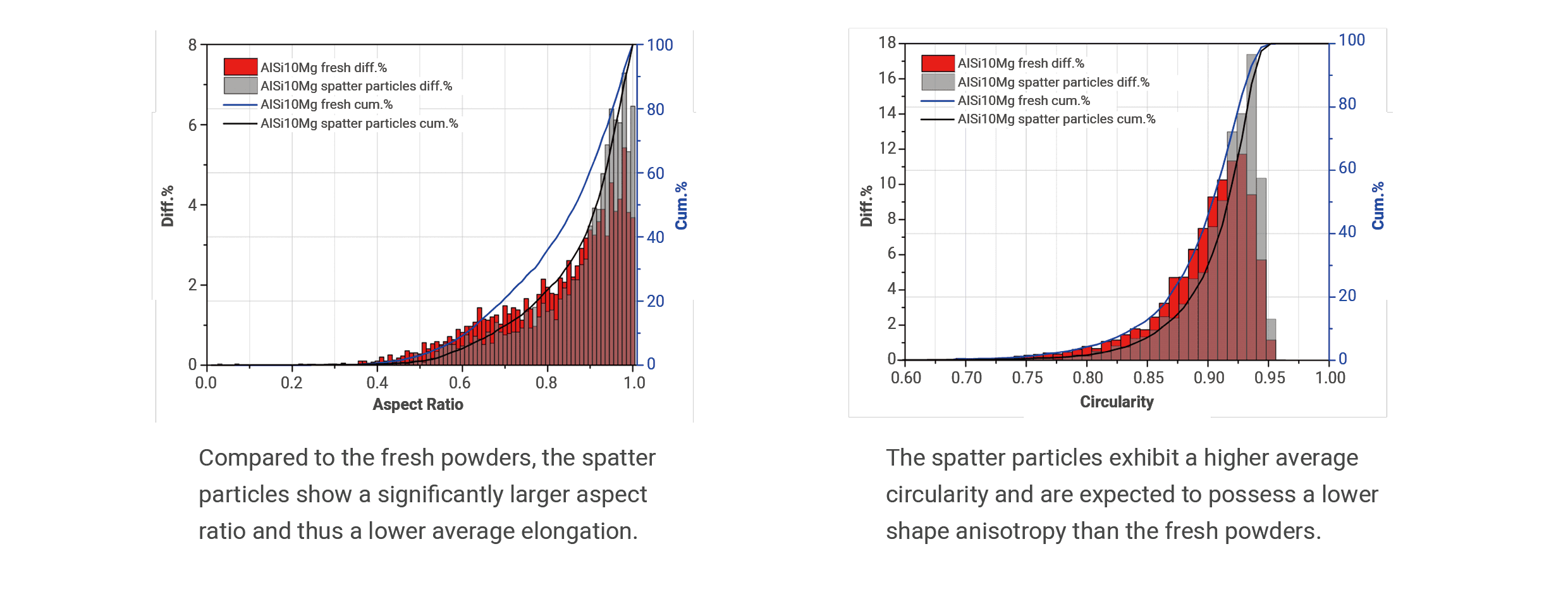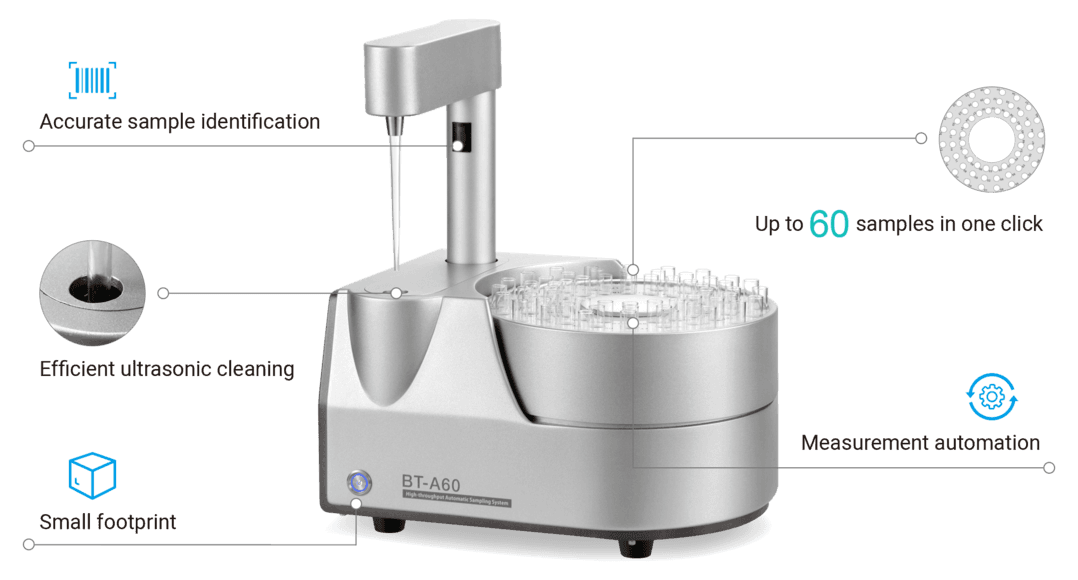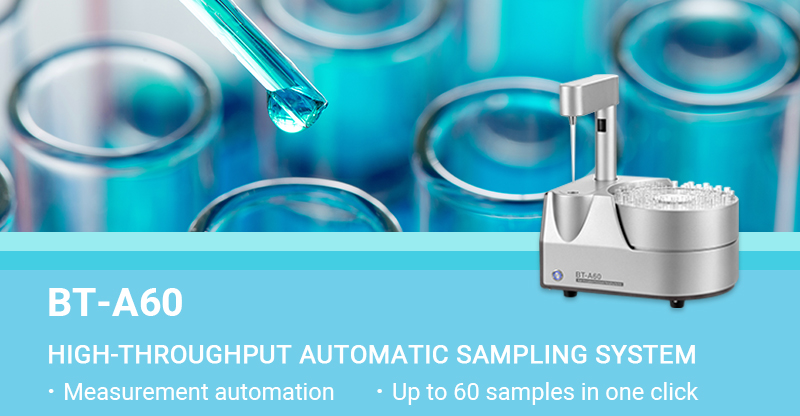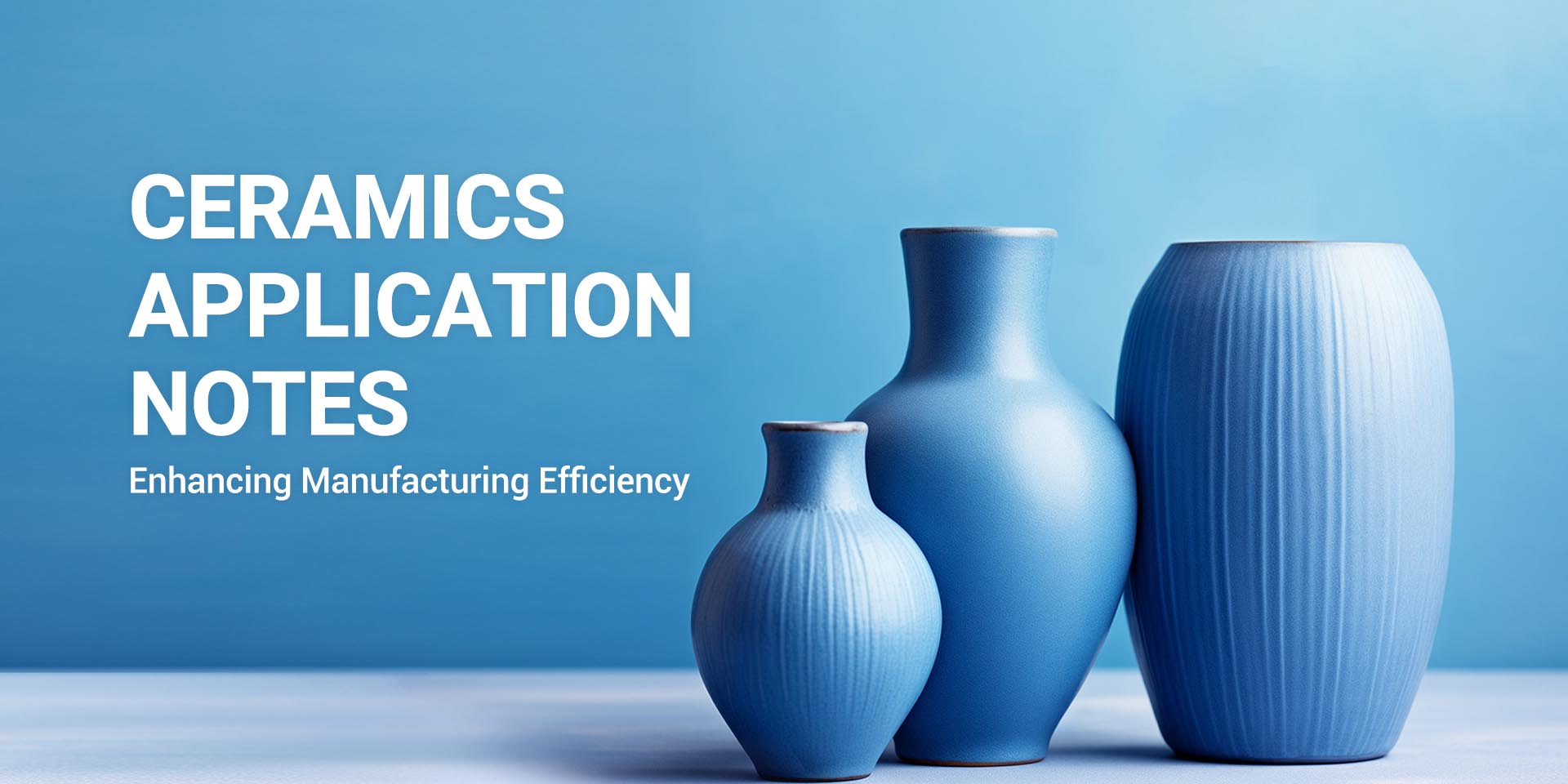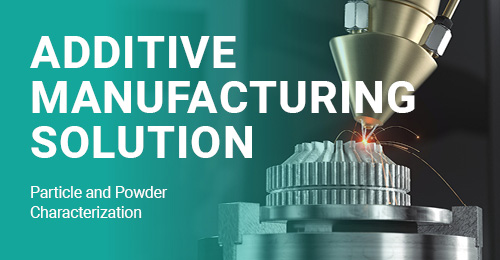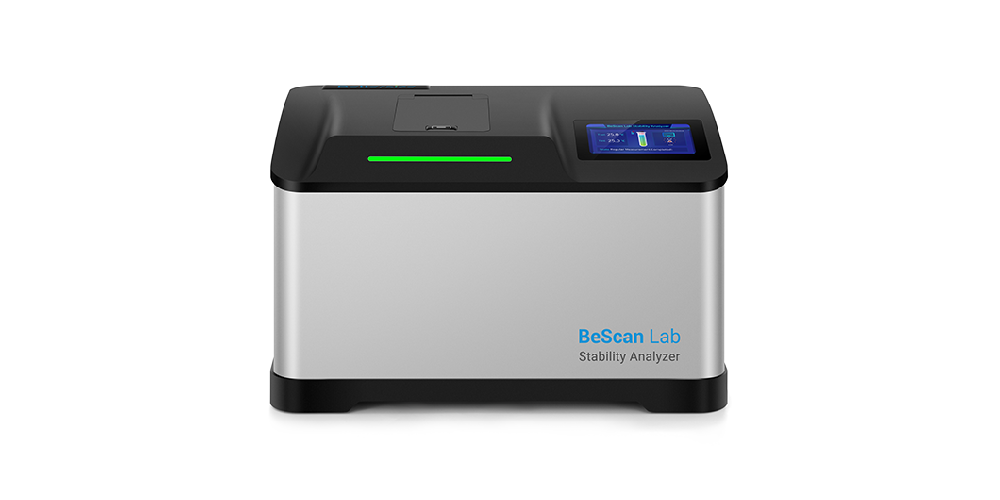Bettersizer S3 Plusは、レーザー回折法と動的画像解析を一体化した先進的な粒子測定装置です。0.01μmから3500μmの範囲で粒子の粒径分布および形状特性を高精度に測定することが可能です。超微粒子や粗大粒子に対する卓越した検出感度と分解能を兼ね備えており、粒径および形状解析の最適解を提供します。
機能と利点
- ● 測定範囲:0.01~3,500μm(光散乱法)、2~3,500μm(画像解析法)
- ● レーザー回折法と動的画像解析を統合した革新的な設計により、粒子径分布と形状特性を同時に取得可能
- ● 特許取得済みDLOI技術(Dual Lenses & Oblique Incidence)を採用し、0.01μmの超微粒子測定を実現
- ● デュアルカメラシステムにより、粒子画像をリアルタイムで表示し、3,500μmまでの粗大粒子を高感度に検出
- ● 屈折率測定機能により未知試料の屈折率を高精度に解析し、結果の信頼性を向上
- ● 21 CFR Part 11、ISO 13320、USP <429>、CEに準拠
ビデオ
How to Install and Operate Bettersizer S3 Plus 
Bettersizer S3 Plus | Strive for Excellence in All You See 
BT-A60 Autosampler | Demo 
Demo of Bettersizer S3 Plus 2-In-1 Particle Size and Shape Analyzer 
Fundamentals of Bettersizer S3 Plus 2-In-1 Particle Size and Shape Analyzer 
Bettersizer S3 Plus | Particle Size and Shape Analyzer 
Bettersizer S3 Plus Overview | Strive for Excellence in All You See 
概要
Bettersizer S3 Plus 粒子径・形状解析装置 概要
Bettersizer S3 Plusは、レーザー回折・散乱法と動的画像解析法を統合した先進的な粒子径・形状解析装置であり、0.5Xおよび10X倍率の2台の高速CMOSカメラを搭載し、粒子の詳細な画像を高精度で取得します。測定は、粒子が選択した媒質に分散され、2つのサンプルセルを通過することによって行われます。最初のサンプルセルでは、短波長のレーザー光(532 nm)が粒子に照射され、粒子から発生した光の散乱が検出されます。この散乱光は、0.02°から165°の広角度範囲で96個の検出器により収集され、粒子径分布が詳細に解析されます。次に、粒子は第二のサンプルセルを通過し、ここで2台の高速CMOSカメラが連続的に粒子の画像を取得します。これにより、粒子の形状に関する詳細な情報が得られ、2μmから3500μmまでの幅広い粒子径範囲に対応します。画像解析システムは、粒子の幾何学的形状や凝集体の検出を高精度で行い、動的な形状解析を提供します。この2段階の解析プロセスにより、粒子のサイズと形状に関する総合的かつ詳細な情報を同時に取得でき、粒子分析の精度と効率を大幅に向上させます。
1. レーザー回折・散乱法:特許取得済みDLOI(Dual Lenses Oblique Incidence)システム:レーザー回折・散乱法
レーザー回折・散乱法は、粒子径分析において広く使用される標準的な手法であり、多くの産業分野で重要な役割を果たしています。Bettersizer S3 Plusは、フーリエ(Fourier)構造に基づいて設計された特許取得済みのDLOIシステムを採用しており、0.01μmの超微粒子に対する正確な測定を実現します。このシステムは、微細な粒子の正確な回折データ取得を保証し、測定精度を飛躍的に向上させます。
特徴と利点:
- 0.02°~165°の広範囲な角度範囲をカバーし、96個の検出器を使用することで、超微粒子(0.01μm)でも高精度に測定が可能
- デュアルレンズ設計により、優れた光学解像度を維持し、粒子回折パターンをより詳細に解析
- 一貫した波長 (532 nm) で連続的な散乱スペクトルを提供し、広範囲の粒子径に対して精度の高いデータを得ることが可能
- 固体光源を使用することで、ゼロの安定化時間および予熱時間が不要となり、即時の測定が可能
- システム全体の高精度と安定性により、測定結果の再現性が優れており、長期間にわたる信頼性が確保

2. 動的画像解析法:デュアルカメラシステム
動的画像解析は、レーザー回折法に依存せず、粒子の形状や構造に関する詳細な情報を提供します。この技術により、凝集体、破砕粒子、異物などの特定の幾何学的特性を持つ個別粒子を高精度で追跡できます。デュアルカメラシステムは、粒子形状に関する深い洞察を提供し、複雑なサンプルの分析において非常に効果的です。
特徴と利点:
- 0.5xおよび10x倍率のカメラ:粒子の非常に広範なサイズ範囲を高精度で撮影し、さまざまな粒子を詳細に捉えます
- 高速ストロボライト:1秒間に最大10,000枚の粒子画像を撮影し、形状に関する実際のデータを迅速に提供
- 未知の光学特性を持つサンプルでも正確な測定が可能で、複雑な粒子や異物の特定をサポート
3. 革新的な組み合わせ:レーザー回折法と動的画像解析法の統合
Bettersizer S3 Plusは、レーザー回折法と動的画像解析を一体化した先進的な粒子分析装置であり、粒子径、粒度分布、粒子形状を広範囲のダイナミックレンジで同時に測定することができます。この革新的な組み合わせにより、粒子の挙動を深く理解し、トラブルシューティングや測定手法研究の効率を大幅に向上させます。
特徴と利点:
- DLOIシステム:超微細粒子(0.01μm)を高精度で測定可能。広角度範囲を利用し、精密な回折データを取得
- デュアルカメラによる画像解析システム:最大3,500μmの粗大粒子を効率よく検出し、形状解析まで可能
- 2-in-1システム:粒子径と形状の両方の測定結果を同時に取得し、包括的な粒子特性の解析を実現
- 迅速な結果取得:10秒以内で測定結果を迅速に生成し、分析過程を加速
4. アプリケーション
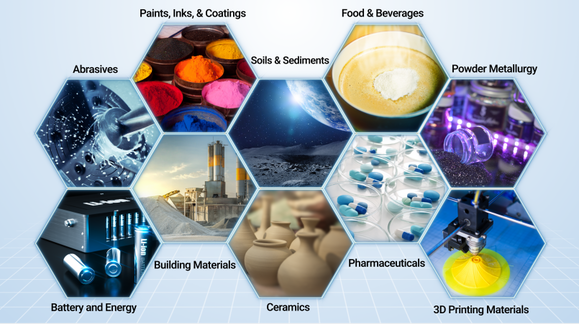
Citations
- Bettersizer 2600
Functional redundancy as an indicator for evaluating functional diversity of macrobenthos under the mussel raft farm near Gouqi Island
DOI: 10.1016/j.aquaculture.2023.740024 Read ArticleZhejiang Ocean University | 2024Biological traits analysis (BTA) helps to evaluate the effects of different environmental variables on the traits-based functional composition of macrobenthos. However, research on functional traits of macrobenthos under mussel farming is limited. We investigated the spatial and temporal response of the benthic system in terms of taxonomic and functional diversity to environmental variables of farming and natural stressors resulting from suspended mussel farming near Gouqi Island of eastern China Sea. The functional traits of macrobenthic assemblages under mussel farming were characterized by “medium adult body size”, “vermiform body form”, “high flexibility”, “infauna”, “semi-motile”, “gonochoristic”, “surface deposit-feeders”, “carnivores”, “semi-motile burrowers”, and “tube-dwellers”. Functional redundancy was stable in response to mussel farming stresses among seasons, whereas species diversity showed efficient to evaluate natural variables. Functional diversity was significantly affected by farming stressors rather than natural variables, Further analysis using multivariate methods together with continuous monitoring were highlighted to evaluate the impacts of mussel farming. Our results reinforce the importance of macrobenthic species and functional traits analysis to evaluate human stresses driven impacts in offshore ecosystems. By analysing the environmental variables with different sources, independently, we concluded the main effects of human pressures on macrobenthic community. Such distinction could be particularly effective to isolate variable environmental descriptors and evaluate their effects on functional diversity, making the current approach promising for the evaluation of ecological effects of anthropogenic stressors in aquaculture areas. - Bettersizer 2600
Degradation characteristics and utilization strategies of a covalent bonded resin-based solid amine during capturing CO2 from flue gas
DOI: 10.1016/j.seppur.2023.125621 Read ArticleChina University of Petroleum | 2024In this study, various types of degradation as well as attrition which are possibly encountered in a circulating fluidized bed temperature swing adsorption (CFB-TSA) process, were conducted experimentally to evaluate the stability of a resin-based solid amine sorbent. Other characterizations methods, such as elemental analysis (EA), Fourier transform infrared spectroscopy (FTIR) etc. were applied to further reveal the degradation mechanisms. The results showed that thermal degradation occurs from 140–160 °C due to the decomposition of amine group. The CO2-induced degradation occurs from a higher temperature of 160–180 °C accompanied by the production of urea. Hydrothermal stability is good below 130 °C, but the ionic impurities in steam crystalized on particle surface can accelerate the degradation. Oxidative degradation is the most harmful, which starts at a lower temperature of 70–80 °C with the formation of aldehyde. The existence of H2O in atmosphere can alleviate the oxidative and CO2-induced degradations. The employed sorbent has a very low attrition index of 0.05, which is 1–2 orders lower than typical commercial fluidized bed catalysts. Based on the results of stability evaluation, some design suggestions for proper utilization of this sorbent or other similar resin-based sorbents have been provided in an industrial CFB-TSA process.
- Bettersizer 2600
De-branching of starch molecules enhanced the complexation with chitosan and its potential utilization for delivering hydrophobic compounds
DOI: 10.1016/j.foodhyd.2023.109498 Read ArticleShihezi University | 2024The current study aimed to prepare the complexes between debranched-waxy corn starch and chitosan polymers (DBS-CS), and then investigated their corresponding structural characteristics, rheological property and potent application in Pickering emulsion. The results indicated that the existence of chitosan significantly inhibited starch short-range molecular rearrangement for all DBS-CS samples, which was manipulated by both debranching treatment and chitosan content. Interestingly, this is the first study to reveal that the outstanding peak at 1.8 ppm in 1H NMR spectrum for sample DBS-CS was gradually shifted towards a lower-field region following an increased chitosan content. Moreover, the debranching treatment shifted the crystallinity pattern from A-type to B-type and the relative crystallinity of DBS-CS decreased gradually with the increased content of CS. All samples had a pseudoplastic fluid and shear-thinning behavior with an enhanced shear resistance following the complexation. The DBS-CS was applied in a Pickering emulsion for showing a greater emulsifying stability and a lower gel strength than native NS-CS prepared emulsion. Importantly, the encapsulation ability of curcumin in the DBS-CS emulsion was significantly improved, followed by an increase of 15.45% for its corresponding bioavailability compared to the control. Therefore, this study might highlight a potential carrier for delivering the bioactive substances in a green pattern. - Bettersizer 2600
Heat-induced aggregation behavior of wheat gluten after adding citrus pectin with different esterification degree
DOI: 10.1016/j.foodhyd.2023.109420 Read ArticleGansu Agricultural University | 2024Wheat gluten aggregation during heat treatment is beneficial to the final quality of gluten-based products. Exogenous pectin can affect gluten aggregation. However, the effect of pectin with different degrees of esterification on the heat-induced aggregation behavior of gluten and its possible mechanism are still unclear. Thus, the heat-induced aggregation behavior of gluten after adding pectin with different esterification degree was studied in this study. When the temperature was raised from 25 °C to 95 °C, pectin affected gluten aggregation and was related to the degree of esterification. Specifically, the results of rheological properties and particle size indicated that low-ester pectin improved the viscoelasticity of gluten and promoted gluten aggregation. Thermal properties revealed that enthalpy of gluten added with low-ester pectin (37%) increased from 92.96 J/g to 95.40 J/g during heating process. Structurally, the fluorescence intensity and surface hydrophobicity of gluten added with low-ester pectin (37%) were lower than those added with high-ester pectin (73%). In addition, low-ester pectin (37%) significantly increased the disulfide bond content (from 15.31 μmol/g to 18.06 μmol/g) and maintained β-sheet content of gluten compared with gluten alone at 95 °C, indicating that low-ester pectin was more likely to induce gluten aggregation. However, scanning electron microscope showed that the gluten added with low-ester pectin (46%) exhibited a denser network structure at 95 °C than that added with low-ester pectin (37%). These results will provide a theoretical base for the regulation of gluten aggregation and the quality of gluten-based products by pectin with different esterification degree.
- 1
- 2
- 3
- 4
- 5
- 6
- 84
厳選されたリソース
お客様のお声








